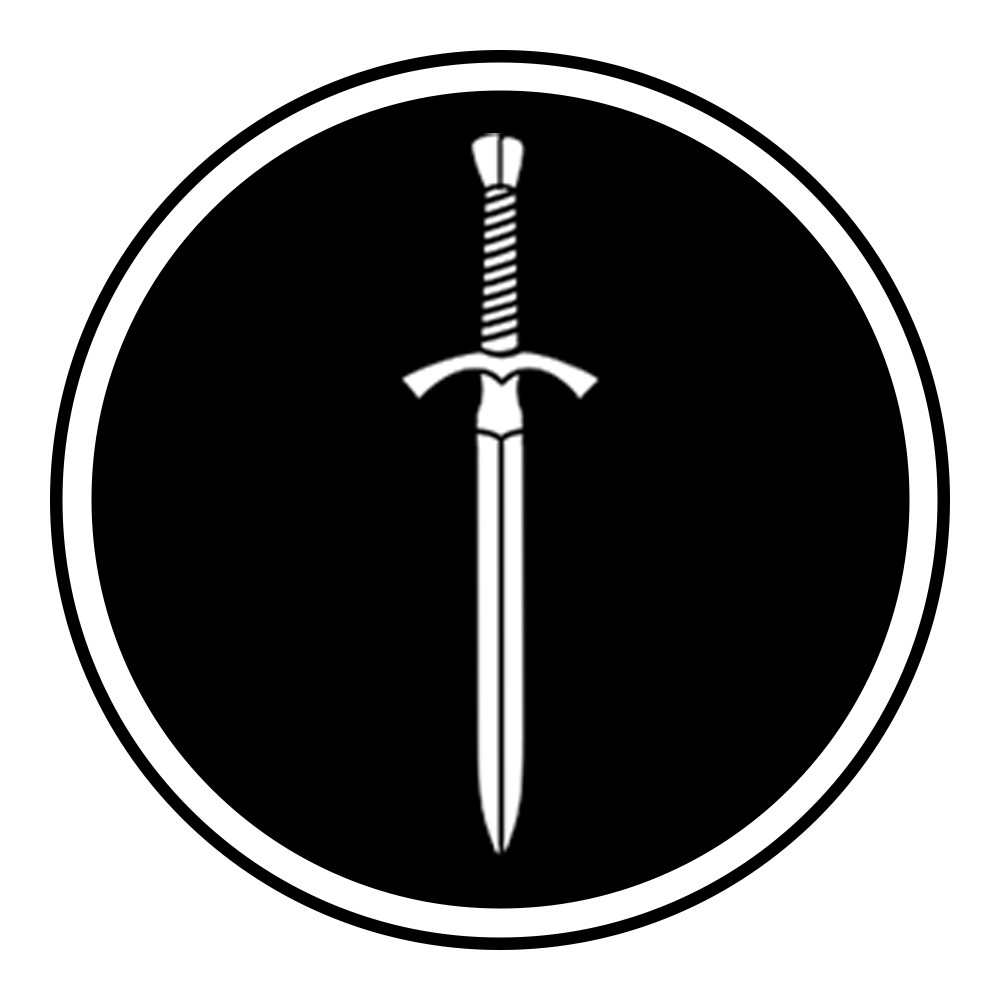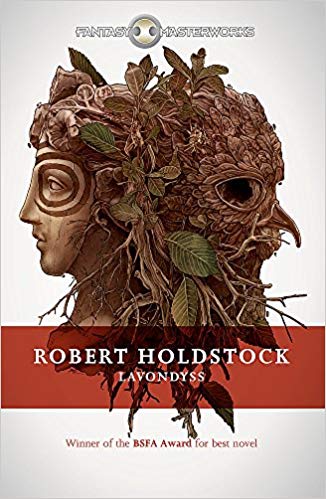Lavondyss, by fantasy and sci-fi author Robert Holdstock, was first published in 1988 and is the follow-up to Holdstock’s 1984 work Mythago Wood. Reading Mythago Wood before reading Lavondyss is absolutely necessary.

The plot concerns a girl called Tallis Keeton, born in 1944 in rural England. As she grows up, she has a series of strange encounters with creatures that live in Ryhope Wood and surrounding landscape near to her house that affect her life, and the lives of her parents, forever.
Eventually, as a young teenager, she prepares for a journey deep into the wood that she is sure will last only a week…
The book opens with Tallis’ grandfather waiting in the snow on a winter night, listening to the cries of baby-Tallis coming from the warmth inside the house.
Out of the blizzard approaches a silent form that the old man calls White Mask.

He begs this apparition to not take Tallis away yet, for it would break her parents’ hearts, and to leave her for a few more years.
With this mysterious creature apparently agreeing, the grandfather then follows White Mask out into the snow.
The story then jumps forward to a thirteen-year-old Tallis, conversing with a man in the fields and meadows of a warm summer who we recognise as composer Ralph Vaughan Williams, out “collecting tunes” from the countryside, as he really did.

We get an introduction to the enigmatic Tallis, seen from Williams’ eyes, as she weaves her stories and explains the magic of the landscape to the old man. These are clearly mere childish games, yet he is fascinated with the girl and her astonishing way with a tale.
He also seems to see in the bushes a hooded creature with a white face…
We then jump back again to Tallis’ early childhood and see her growing up into an odd, isolated girl who seems to live in a world of her own, quite apart from her parents and almost-entirely friendless.

All this happens in the first few pages and it introduces the characters and themes before the narrative really takes off.
Unlike the previous novel, Mythago Wood, this one is third-person and told largely but not exclusively from Tallis’ perspective.
We also hear new myths, told partially or fully in many forms.
Generally linear, the story does jump forward and back in time occasionally, as well as switching the perspective a couple of times, most notably to a secondary but vitally important character around the middle section of the book.

This novel lacks the narrative drive of Mythago Wood and instead of that thrilling structure we have more of a dream-like tale that deals with the essence of myth in a more poetic, literary fashion.
The title, Lavondyss, refers to the mythic landscape also known as Avalon, Lyonesse and Dis (no, not the little town in Norfolk) to the people of different times and places, and all of which are taken to be representations of the same archetypal concept.
The novel deals with how a particular myth may have been first born, in the impossibly remote never-ending winter of the last ice age, and how that myth has grown in sophistication through the ages while retaining its essence.

This entire book is written in a wonderful, literary style, with the most incredible descriptions of woodland I have ever read.
Like the previous novel, this is not a romanticised view of British woodland, but a dark, earthy, dangerous and wild landscape and the book is filled from start to finish with images of bones, bark and stone and the smell of blood and decay.
The writing in this book is incredibly powerful and somewhat haunting. Reading it leaves me strangely dazed, especially the entire second half and the very end in particular. Holdstock is an extremely gifted writer and he’s at the very top of his game here.

This novel will not be to everyone’s taste.
As well as the confusing structure and lack of driving plot, it is extremely dark in places, even unpleasant.
It’s difficult to explain further without divulging a lot of content, so I will refrain, but this is quite an unusual book.
Holdstock has continued to write more tales of the mythagos and Ryhope Wood, with somewhat diminishing returns.
Mythago Wood – 1985
Lavondyss – 1988
The Bone Forest (a novella and short story collection) – 1991
The Hollowing – 1993
Merlin’s Wood (a novel and two short stories (only published in the UK)) – 1994
Gate of Ivory, Gate of Horn – 1997
Avilion – 2009

Holdstock died a few months after Avilion was published. He was only 61 and died following an infection. The other books in the series introduce more characters and make the world deeper. And yet, as they explain it further it also takes away some of the magic of the earlier books. Still, I enjoyed them all, though Avilion was a bit hard going.
Lavondyss, though, is magical. I can understand those who don’t like it.
But I love it.

